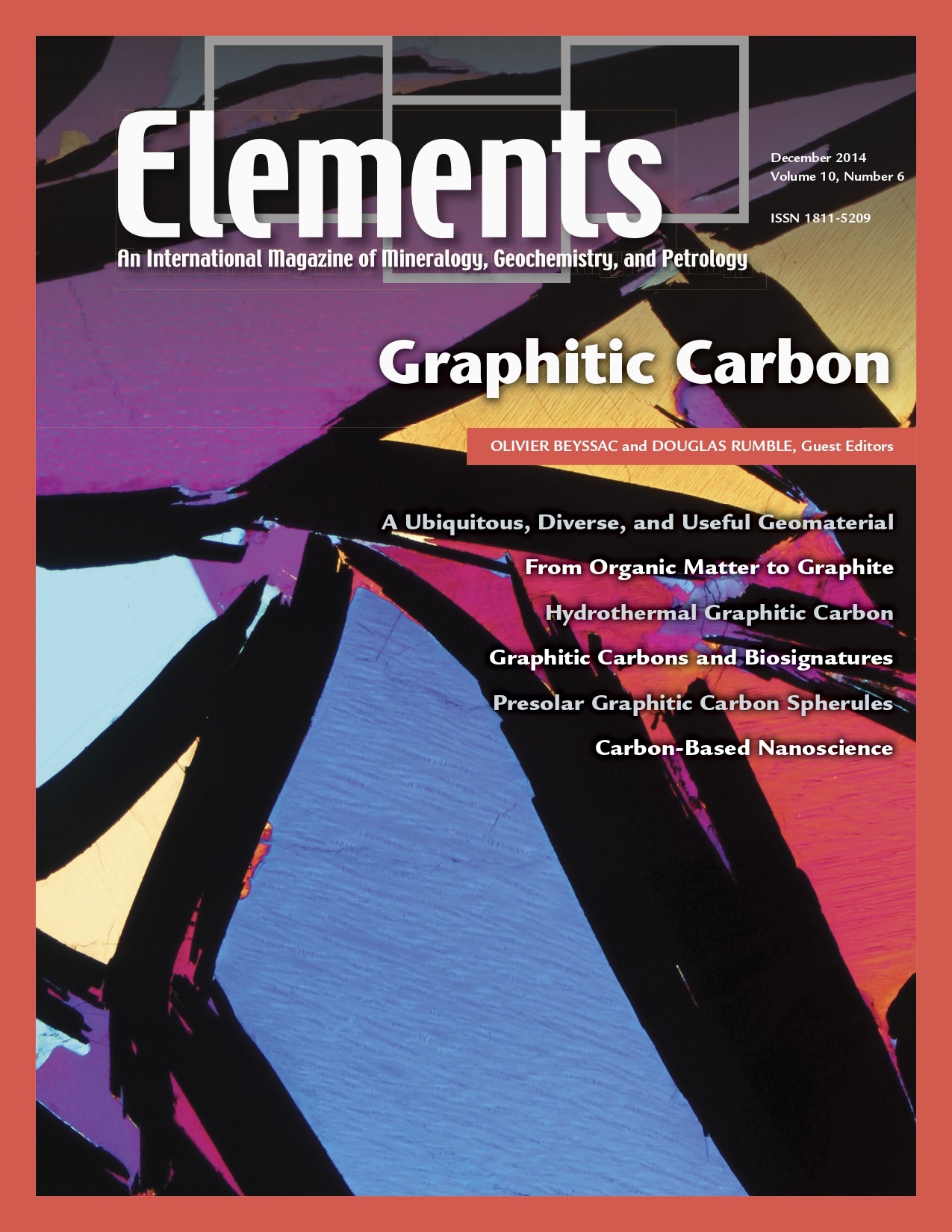
Ophiolites, April 2014, Vol. 10, No. 2
June 28, 2024
Arc Magmatic Tempos, April 2015, Vol. 11, No. 2
June 28, 2024Graphitic Carbon, December 2014, Vol. 10, No. 6
$20.00
In natural systems, graphitic carbons are widespread and exhibit an infinite range of structure, from amorphous-like compounds (e.g.
Graphitic Carbon
December 2014, Vol. 10, No. 6
In natural systems, graphitic carbons are widespread and exhibit an infinite range of structure, from amorphous-like compounds (e.g. soots, charcoal) to crystalline graphite through a myriad of turbostratic structures (e.g. coals, kerogens). A variety of structures and chemistries down to the nanometer scale control the physicochemical properties of graphitic carbons and determine their behavior and fate during geological processes. This issue of Elements presents recent advances in our understanding of the formation of graphitic carbons (graphitization, fluid deposition) and discusses their role as actors and/or tracers in cosmochemistry, geobiology, geochemistry, and petrology. In particular, graphitic carbons may carry an important biological legacy in rocks, they may be used for assessing the thermal history of rocks, and they buffer the chemical composition of fluids in equilibrium with rocks. The issue also presents an introduction to the new carbon nanomaterials (e.g. graphene, carbon nanotubes), which bear structural similarities to natural graphitic carbons, and to their technological applications.
Why You’ll Love Elements Magazine:
- Expert Contributors: Articles written by renowned researchers in the field of geoscience.
- Engaging Content: Join a community of readers who are passionate about Elements.
- Exceptional Quality: Each issue is printed on high-quality paper with stunning visuals and detailed illustrations that bring complex scientific concepts to life.
Order your copy of the December 2014 issue of Elements magazine today and discover graphitic carbon.
Related products
-
Fluids in Planetary Systems, January 2005, Vol. 1, No. 1
$20.00Water and other geofluids play an important role in the geochemical and rheological evolution of the Earth and other bodies in the solar system. These fluids are responsible for the formation of hydrothermal mineral deposits, affect eruption behavior in volcanic systems and the geophysical properties of the mantle, and significantly affect the way in which rocks deform and fracture.
-
Zircon – Tiny But Timely, February 2007, Vol. 3, No. 1
$20.00Where would Earth science be without zircon? As Earth’s timekeeper, zircon has proven to be a remarkable and versatile mineral, providing insights into deep time and ancient Earth processes. However, there is still much to learn about Earth’s history from zircon and its behaviour.
-
Diamonds, March 2005, Vol. 1, No. 2
$20.00Diamond, the fascinating ultrahard mineral, is the focus of considerable interest and scientific research. Recent advances particularly relevant to geoscientists include: diamond as a recorder of Earth processes from the perspective of inclusions, chemistry, and conditions of formation; synthesis for research applications and processing to modify color and physical properties, important to diamond gems and anvils; the implications of nanodiamonds from meteorites.




